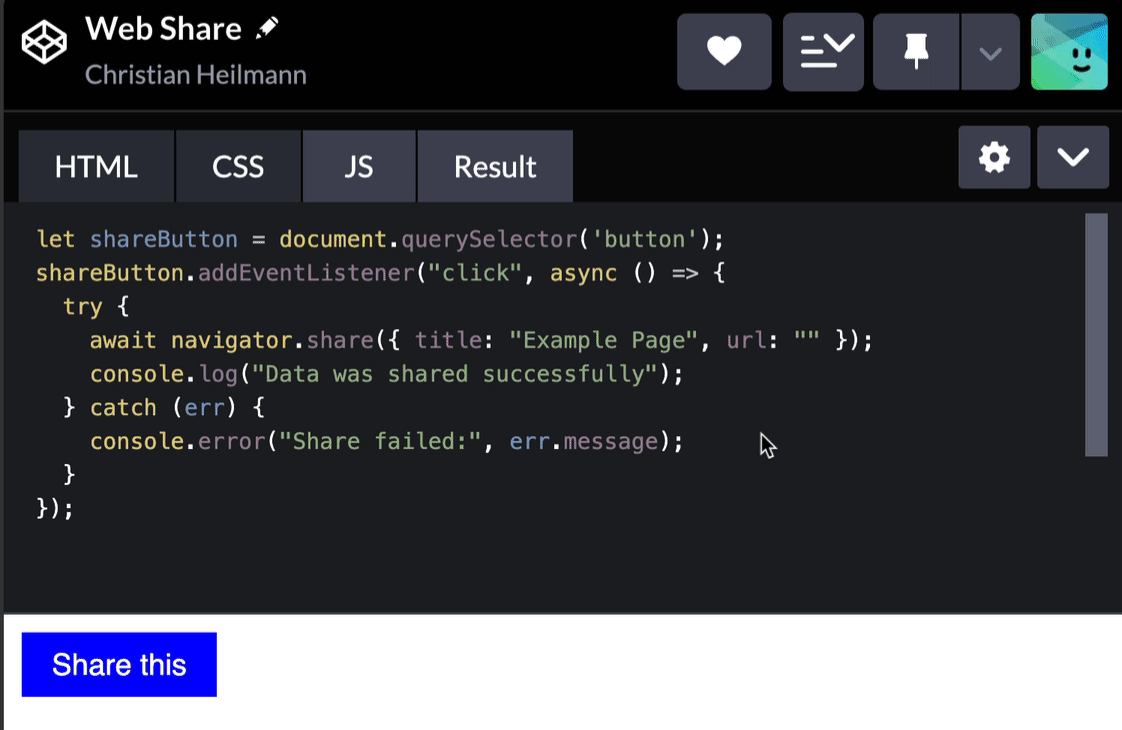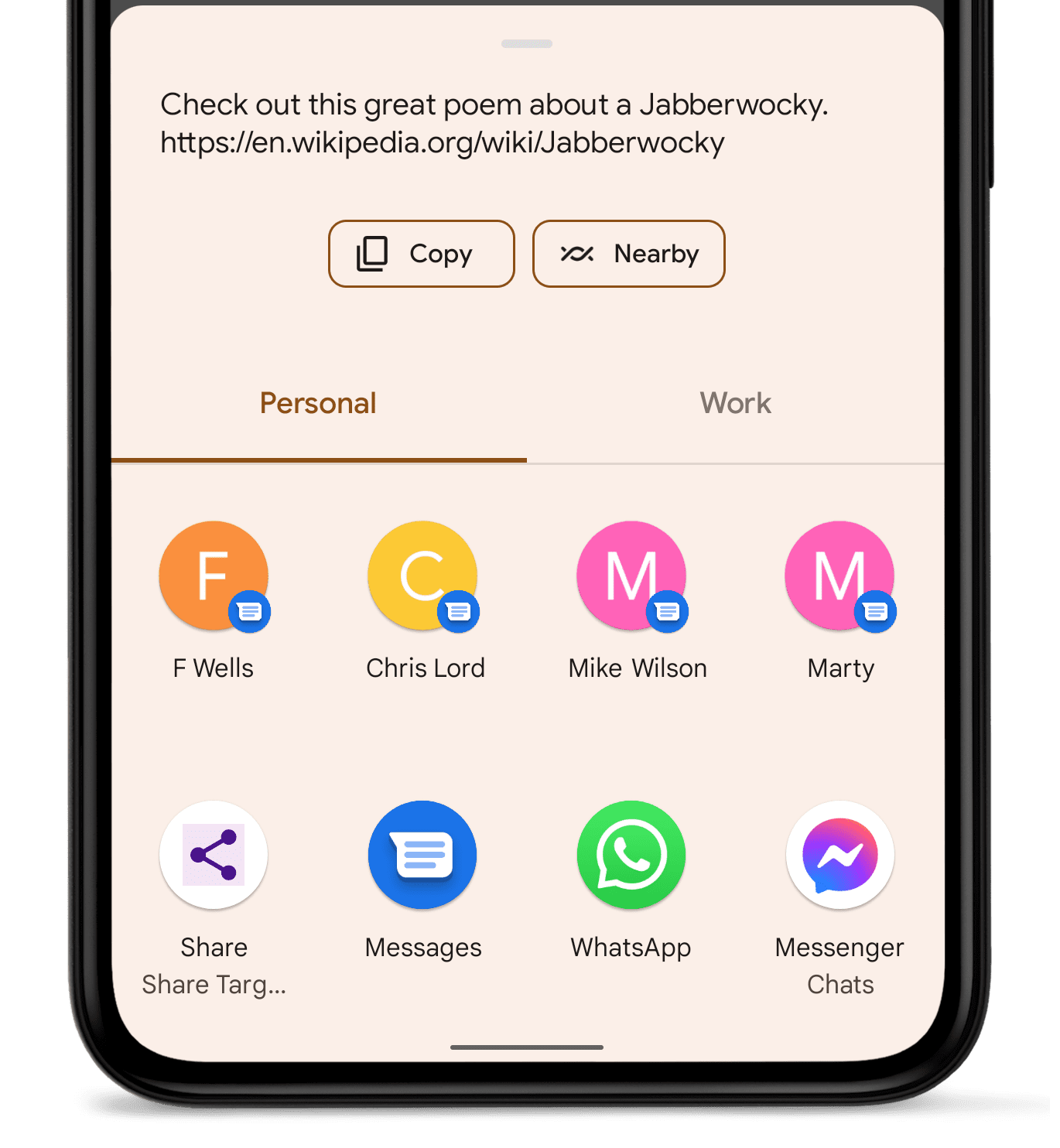Sharing on the Web: How to Use the Web Share API and Why It Matters?

📤 Sharing on the Web: How to Use the Web Share API and Why It Matters
Sharing a page is a simple action that directly affects your traffic, retention, and organic growth. But copying a link manually and pasting it into a messenger is annoying — especially on mobile.
Thankfully, modern browsers offer a solution: Web Share API.
🤔 What Is the Web Share API?
It’s a JavaScript interface that allows your site to trigger the native “share” dialog directly from the browser — just like in mobile apps.
It’s supported in most mobile browsers and some desktop ones.
Example:
The user clicks “Share” and sees a system dialog with familiar apps: Telegram, WhatsApp, Email, Messages.

💡 Why It’s Important
✅ 1. Simple and Convenient
No need for users to:
- copy links manually,
- switch between apps,
- return to your site.
✅ 2. Native UX
The share dialog feels familiar. It works like native apps and creates trust and comfort.
✅ 3. Less Friction = More Traffic
Every removed obstacle increases the chance a user will actually share your content. That means more organic growth.
🚀 How to Use the Web Share API
Minimal example:
const shareData = {
title: 'Great article',
text: 'You should read this!',
url: window.location.href
};
const shareButton = document.getElementById('share-btn');
shareButton.addEventListener('click', async () => {
if (navigator.share) {
try {
await navigator.share(shareData);
console.log('Shared successfully!');
} catch (err) {
console.error('Sharing failed:', err);
}
} else {
alert('Your browser does not support the Web Share API');
}
});📱 Browser Support
| Platform | Support |
|---|---|
| Android Chrome | ✅ Fully supported |
| iOS Safari | ✅ Supported |
| Desktop Chrome | ⚠️ Limited |
| Firefox | ❌ Not supported |
| Edge | ✅ Partially |
Full compatibility table: caniuse.com
🧠 Best Practices
- Add the “Share” button where there’s value: articles, products, discounts, important info.
- Provide a fallback (e.g., copy link popup) for unsupported browsers.
navigator.sharemust be triggered by a user gesture (like a click).
✨ When It’s Especially Useful
- 📚 Blogs or media — easy article sharing
- 🛍️ Promo pages — discounts, special offers
- 📱 Progressive Web Apps (PWAs)
- 👥 Referral programs — sharing invitation links
📝 Conclusion
The Web Share API is a simple but powerful tool. It brings human-friendly, native sharing to mobile browsers. It’s not just a nice UX — it’s a real driver of content and product distribution.
If you don’t have a share button yet — add one today.
Make sharing your site as easy as sending a photo in Telegram.